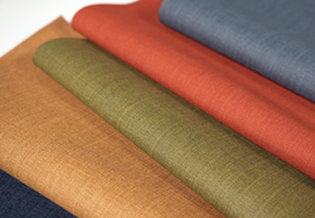 NEW YORK—Hyphyn, the first biodegradable performance vinyl, introduces a breakthrough in sustainable materials, proving that high performance and environmental responsibility can coexist. Engineered with a patented enzyme system and proprietary resin formulation, Hyphyn delivers commercial-grade durability while biodegrading over 90 percent within two years in landfill conditions—a first for performance vinyl.
NEW YORK—Hyphyn, the first biodegradable performance vinyl, introduces a breakthrough in sustainable materials, proving that high performance and environmental responsibility can coexist. Engineered with a patented enzyme system and proprietary resin formulation, Hyphyn delivers commercial-grade durability while biodegrading over 90 percent within two years in landfill conditions—a first for performance vinyl.
“True innovation isn’t just about creating something new—it’s about rethinking what’s possible,” says Iwan Nassimi, Executive Vice President of Nassimi, makers of Hyphyn. “Hyphyn reimagines vinyl’s lifecycle, offering the performance the industry relies on while solving the long-term environmental impact challenges no other vinyl has addressed.”
Redefining Sustainable Performance
Traditional vinyl has been widely embraced by workplace, hospitality, healthcare, retail, education, and other high-traffic spaces for its cost-effectiveness, unwavering durability, and versatility. However, it comes with an environmental cost—offering little in terms of responsible disposal, persisting for generations in landfills, and contributing to microplastic pollution.
Hyphyn changes the equation for designers, specifiers, and businesses prioritizing sustainability, providing a worry-free, regenerative solution to coated upholstery fabrics. Designed to perform like traditional vinyl, Hyphyn offers a critical differentiator: it biodegrades only in landfill conditions, reducing long-term waste without compromising strength, cleanability, or ease of maintenance. Like its namesake, Hyphyn acts as a connector—bridging lasting performance with a more responsible future.
A Breakthrough in Material Innovation
What sets Hyphyn apart is its ability to disappear responsibly. At its core is a patented enzyme system embedded in both the PVC and polyester backing, ensuring the entire material is biodegradable. Once in a landfill, the enzyme activates in response to landfill-specific microorganisms, accelerating microbial breakdown into inert gases—without releasing microplastics or toxic residues. These gases are captured and converted into energy, creating a closed-loop solution that benefits the environment.
Additionally, Hyphyn enables safe disposal through incineration without emitting harmful dioxins—a significant advantage over conventional vinyl.
Proven Environmental Safety: Five-Part Health & Sustainability Testing
Beyond landfill degradation, Hyphyn has undergone five rigorous health, safety, and sustainability tests to verify both performance and environmental integrity:
1. Material Safety—Before degradation, Hyphyn has been tested for chemical content to confirm responsible production. It is free of lead, heavy metals, PFAS, and formaldehyde and meets Prop 65, RoHS, and REACH compliance standards.
2. Biodegradation Testing—In a controlled lab study, Hyphyn was proven to biodegrade over 90 percent within 24 months in landfill conditions.
3. Post-Biodegradation Soil Testing—The remnant soil was analyzed for over 1,000 potentially toxic chemicals. The result? No harmful chemicals were detected.
4. Soil Health Validation—A side-by-side germination study compared soil samples from Hyphyn degradation with those from conventional vinyl. The result? One hundred percent seed germination in Hyphyn-treated soil, confirming its healthy, toxin-free soil.
5. Indoor Air Quality—Hyphyn has been tested for VOC emissions to ensure low-VOC performance and safe indoor air quality.
“Hyphyn isn’t just about where a material begins or how it performs—it’s about where its journey ends,” concludes Nassimi.






